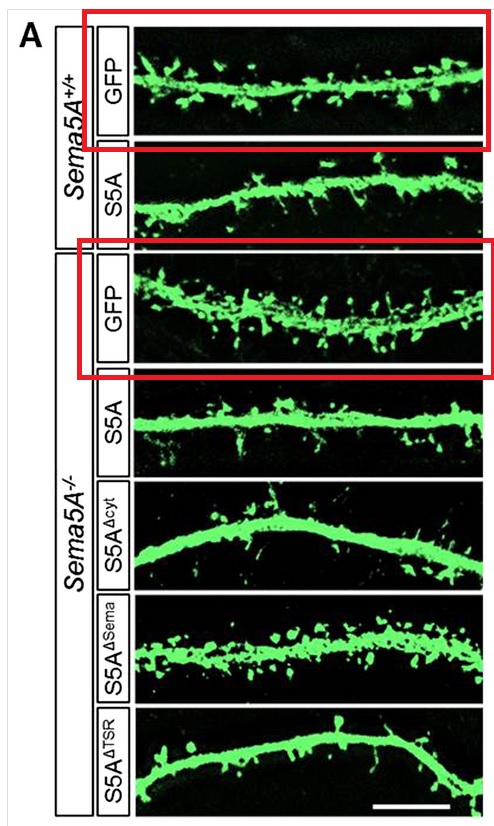With the dawn of advanced genetic sequencing and the completion of the Human Genome Project, science is rapidly trying to dissect the genetic causes for a wide variety of human disorders. Some of the most perplexing human disorders fall on the autism spectrum, which includes things such as autism and Asperger syndrome. Disorders on the autism spectrum are characterized by deficits in social/communication skills, repetitive behaviors, and cognitive delay (in some cases).
Researchers have desperately been trying to link particular genes to autism spectrum disorders (ASD) for many years, as successes in this field may potentially lead to promising therapies. While this problem has certainly been daunting, scientists recently reported in eLife that they have made an interesting connection between a gene called SEMAPHORIN 5A (SEMA5A) and ASDs.
Before I talk about SEMA 5A and it’s role in the brain, I want to briefly emphasize the sheer complexity of your brain. The human brain is certainly one of the most fascinating structures in all of nature, with 80-100 billion neurons making 100 trillion connections to process thousands upon thousands of thoughts a day. Everything from your thoughts on the meaning of life to whether or not you want to wear a coat outside can be reduced to a collection of neurons firing together. That’s pretty wild!

Figure 1: Your body has to coordinate the formation of BILLIONS of these neurons!
As you can imagine, the way in which these neurons connect with one another (these connections are known as synapses) is very tightly controlled. Exactly how this is done is the topic of a lot of research labs around the country (including the lab I worked in as an undergraduate) and is a very fascinating area of research.
SEMAPHORIN 5A is known as an autism susceptibility gene, which are genes that are associated with high risks of developing ASDs. SEMA5A is a protein that controls the formation of dendritic spines, which are projections from dendrites, the part of the neuron that receives input from neighboring neurons.

Figure 2: A comparison of neurons when the SEMA5a gene is deleted. Focus on the two red boxes: the red box on top is when SEMA5A is present, and the red box on the bottom
The difference is pretty dramatic, and mice with SEMA5A deleted gained many of the behavioral characteristics that humans with ASDs have. The exact reason why an increase in dendritic spikes causes behavioral abnormalities is still not very clear, unfortunately.
I know what you’re thinking – so what? Why does this matter? While it may seem like the knowledge gained from this paper seems somewhat limited, keep in mind that this gene, in conjunction with many other genes, are required for a properly functioning neural circuit. If we can understand what genes go awry in different diseases, we are one step closer to fine tuning therapeutics to target those specific genes!
